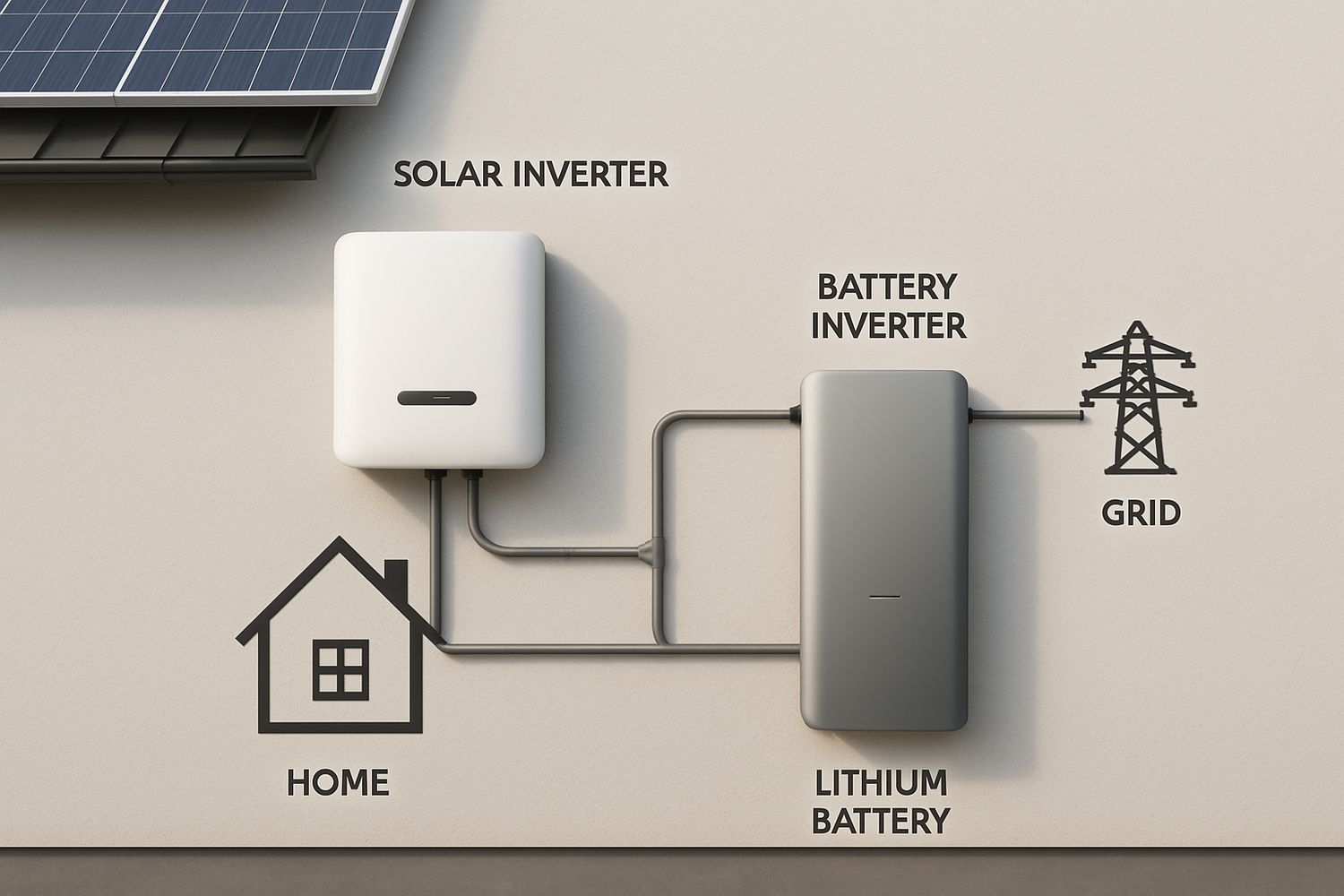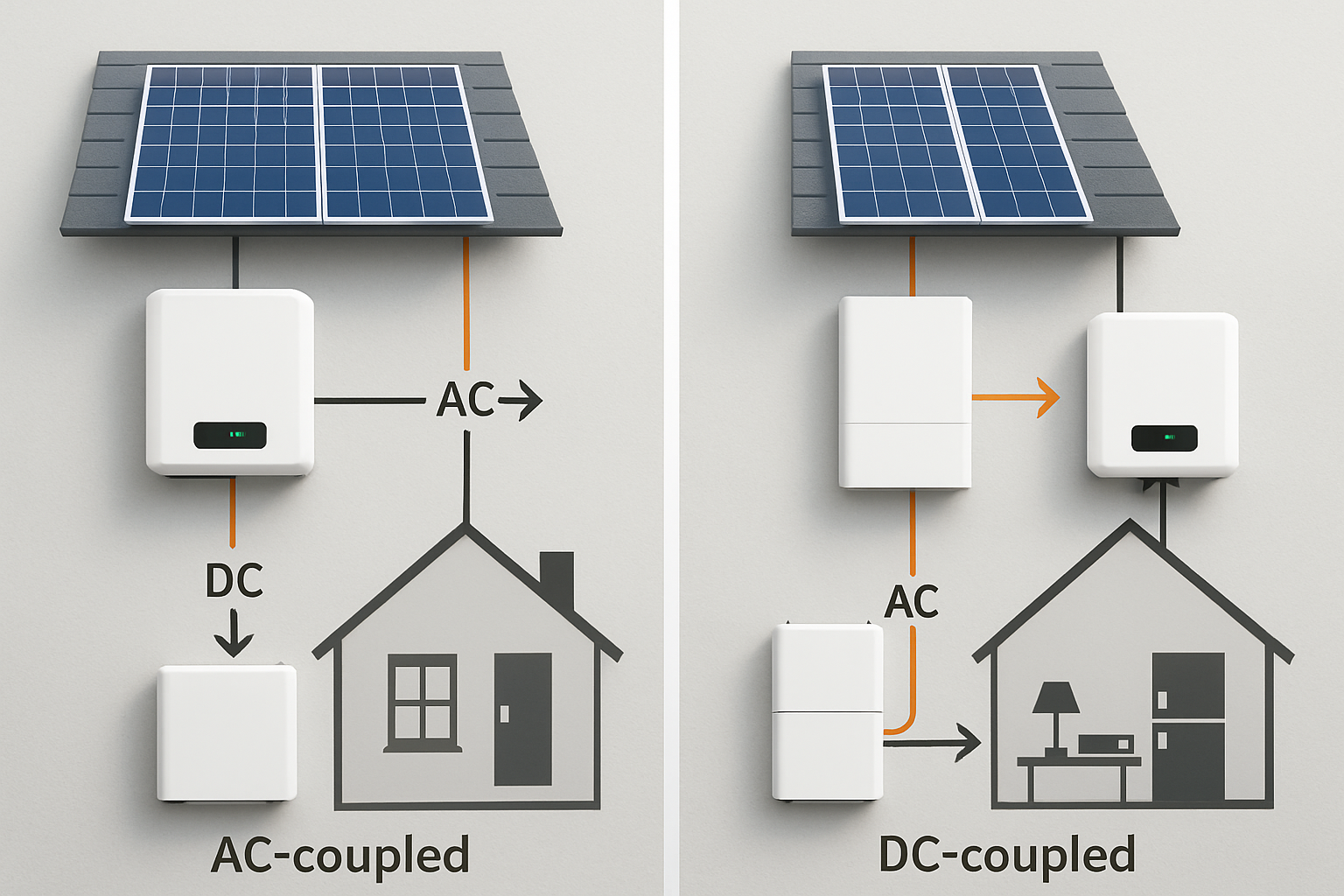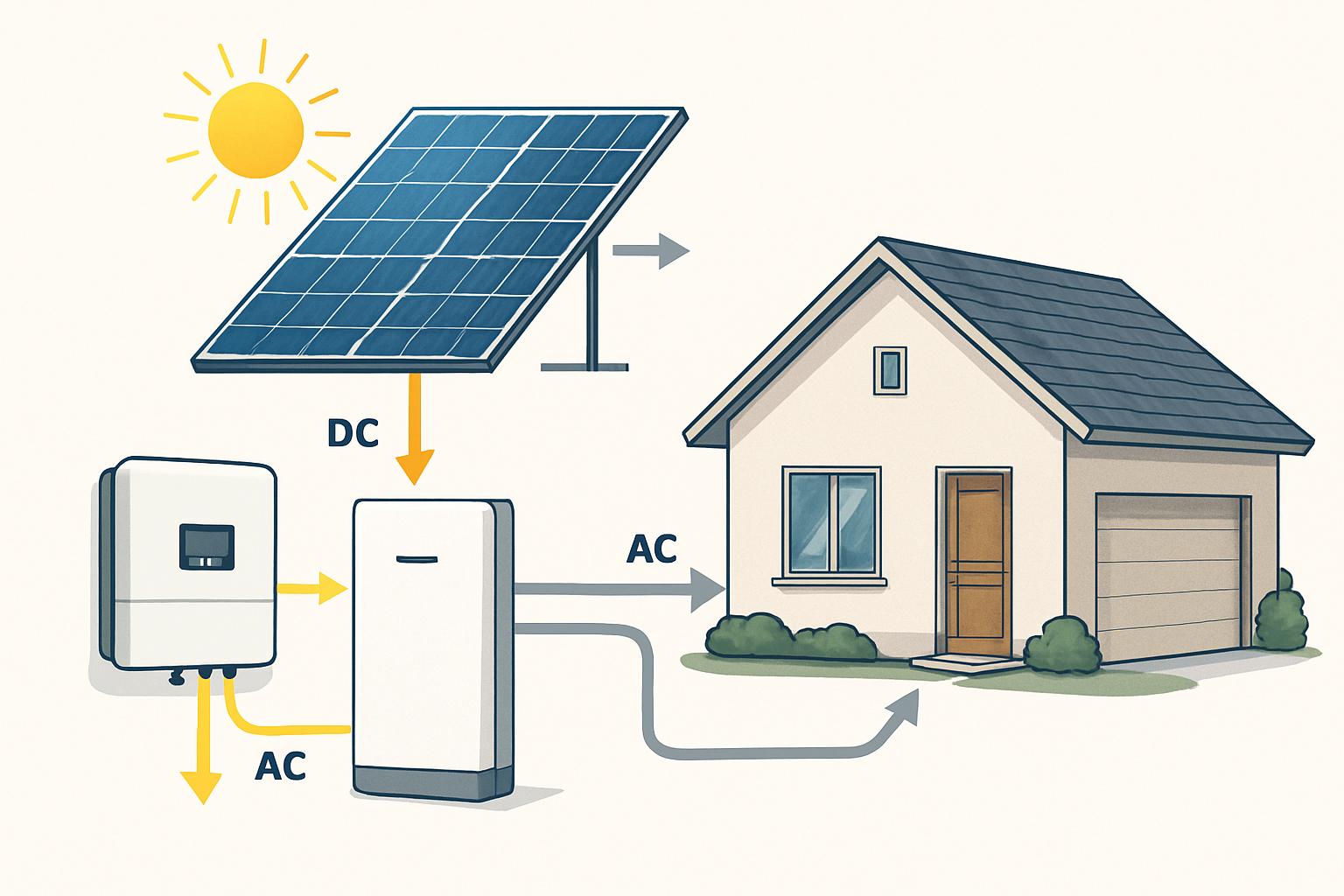AC coupled solar battery systems offer a popular and effective way to add energy storage to new or existing solar panel installations. By allowing you to store excess solar energy, they provide backup power and help reduce reliance on the grid. However, improper design and installation can lead to subpar performance and reduced savings. Avoiding a few common pitfalls ensures your system operates efficiently and reliably for years to come.
Mistake 1: Incorrect System Sizing
Properly sizing your components is the foundation of an effective AC coupled storage system. A mismatch between your solar array, inverter, and battery capacity can create bottlenecks that undermine your energy independence goals.
Mismatched Inverter Power Ratings
An AC coupled system has two key inverters: the solar inverter (converting DC from panels to AC) and the battery inverter (converting AC to DC for storage and back again for use). A common error is failing to correctly size the battery inverter relative to the solar inverter's output. If the battery inverter's power rating is too low, it cannot absorb all the excess solar energy during peak production hours. This leads to 'inverter clipping,' where potential energy is simply lost because it has nowhere to go. Conversely, an oversized battery inverter may operate inefficiently and add unnecessary cost.
Undersized Battery Capacity
Choosing a battery that is too small for your needs is another frequent issue. The battery must have enough capacity to meet your home's energy demands during the night or during a power outage. An undersized battery will drain quickly, forcing you to rely on the grid more than anticipated and diminishing the value of your investment. It's crucial to analyze your daily energy consumption and size the battery to provide adequate backup and facilitate savings through load shifting.
Mistake 2: Overlooking Round-Trip Efficiency Losses
Efficiency is a critical metric for any energy system. In AC coupled configurations, the path electricity takes from the panels to storage and finally to your appliances involves multiple conversions, each incurring a small energy loss.
The 'Double Conversion' Penalty
In an AC coupled system, the DC power from solar panels is first converted to AC by the solar inverter. To be stored in the battery, this AC power is then converted back to DC by the battery inverter. When you need to use that stored energy, it's converted from DC back to AC a final time. This DC-AC-DC-AC pathway results in lower overall round-trip efficiency compared to some other architectures. These losses, though small at each step, add up over the life of the system.
Comparing AC vs. DC Coupled Systems
DC coupled systems, where panels and batteries share a single hybrid inverter, are generally more efficient for storing solar energy because the power stays in DC form until it's needed by the home. However, AC coupled systems are often more straightforward and cost-effective for retrofitting existing solar installations. Understanding the trade-offs is key. A detailed look at solar storage performance metrics reveals how these efficiency differences can impact long-term savings.
| System Type | Typical Round-Trip Efficiency | Best Use Case |
|---|---|---|
| AC Coupled | 90% - 94% | Retrofitting existing solar installations |
| DC Coupled | Up to 98% | New solar and storage installations |
Mistake 3: Ignoring System Integration and Compatibility
Modern energy storage systems are complex ecosystems. Seamless communication and compatibility between all components are vital for optimal operation. Failure to ensure proper integration can lead to performance issues and system faults.
Poor Component Communication
The solar inverter, battery inverter, and the battery's management system (BMS) must communicate effectively. This digital handshake ensures that the battery charges and discharges correctly and that the system responds appropriately to changes in solar production and home energy use. Using incompatible components or improperly configured communication protocols can result in system errors, inefficient charging, or even premature component failure.
Neglecting Software and Firmware Updates
Like any smart device, inverters and batteries rely on software to function. Manufacturers regularly release firmware updates to improve performance, add new features, and patch security vulnerabilities. Neglecting these updates means you could be missing out on critical improvements that enhance efficiency and reliability. Always ensure your system's components are running the latest recommended firmware.
Mistake 4: Misunderstanding Grid Interaction Rules
AC coupled systems have unique ways of interacting with the grid, especially when managing excess solar power. Understanding these mechanisms is crucial for ensuring stable operation.
Limitations of Frequency Shifting
When the battery is full and solar production exceeds household demand, the battery inverter must signal the solar inverter to reduce its output to prevent overcharging. It does this by slightly increasing the AC frequency on the local circuit. Most modern grid-tied inverters recognize this frequency shift and ramp down their power output. However, older or less sophisticated solar inverters may not respond correctly and could shut down abruptly, causing an interruption in power production.
Backup Power Transition Gaps
When the grid fails, an AC coupled system must create its own stable AC signal to power the home and keep the solar inverter online. This transition is not always instantaneous. There can be a brief interruption in power, which might be enough to reset sensitive electronics. While typically short, this is an important consideration for users who require an uninterruptible power supply (UPS).
Mistake 5: Poor Installation and Placement
The physical installation of your battery system is just as important as the electrical design. Environmental factors can significantly impact the performance and lifespan of your batteries.
Inadequate Ventilation and Temperature Control
Batteries, particularly lithium-ion chemistries like LiFePO4, perform best within a specific temperature range. High temperatures can accelerate degradation and reduce the battery's lifespan, while very cold temperatures can temporarily reduce its capacity and ability to charge. Installing a battery in a poorly ventilated space or in direct sunlight can lead to overheating and diminished performance. The ideal operating temperature for most solar batteries is between 59–77°F (15–25°C).
Incorrect Wiring and Safety Measures
Adherence to electrical codes and best practices is non-negotiable. Using undersized wires can create a safety hazard and limit system performance. Proper circuit protection, such as breakers and fuses, must be installed correctly to safeguard the equipment and your home. A professional installation ensures all safety measures are in place for a reliable and secure system.
Achieving Success with Your Storage System
An AC coupled solar battery system is a powerful tool for achieving greater energy independence. By avoiding these common mistakes—from initial sizing and efficiency considerations to proper integration and installation—you can build a robust and reliable system. A well-planned system not only provides peace of mind with backup power but also maximizes the financial returns on your solar investment. The growth in energy storage is critical for a cleaner energy future, as highlighted by organizations like the International Energy Agency (IEA), which notes that storage is essential for managing the variability of renewables. Similarly, reports from the International Renewable Energy Agency (IRENA) project a massive increase in battery storage capacity, driven by falling costs and the need to support renewable energy goals.
Frequently Asked Questions
Can I add an AC coupled battery to any existing solar system?
In most cases, yes. AC coupling is designed for easy retrofitting with existing grid-tied solar systems, regardless of the solar inverter brand. The AC coupled battery system connects to your home's main electrical panel, operating in parallel with the existing solar installation. However, it is important to confirm compatibility, especially regarding the solar inverter's ability to respond to frequency shifting.
What is 'power clipping' in an AC coupled system?
Power clipping occurs when the solar panels produce more DC power than the battery inverter can convert and store at a given moment. This typically happens on bright, sunny days when the battery is already full. The excess energy that cannot be used by the home or stored in the battery is 'clipped' or curtailed, meaning it is not utilized. Proper inverter sizing helps minimize these losses.
How does temperature affect my solar battery's performance?
Temperature significantly impacts battery health and efficiency. High temperatures (above 85°F or 30°C) can accelerate the degradation of battery cells, reducing their overall lifespan. Cold temperatures (below freezing) can temporarily reduce the available capacity and slow down charging and discharging rates. Storing batteries in a temperature-controlled environment, like a garage or basement, is highly recommended.





Leave a comment
All comments are moderated before being published.
This site is protected by hCaptcha and the hCaptcha Privacy Policy and Terms of Service apply.